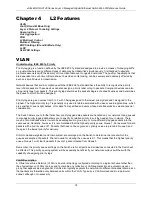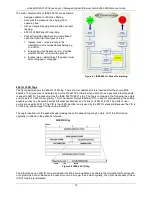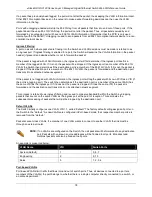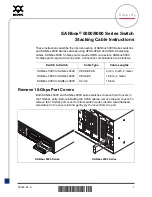
xStack® DGS-3120 Series Layer 3 Managed Gigabit Ethernet Switch Web UI Reference Guide
79
On port-based VLANs, NICs do not need to be able to identify 802.1Q tags in packet headers. NICs send and
receive normal Ethernet packets. If the packet’s destination lies on the same segment, communications take place
using normal Ethernet protocols. Even though this is always the case, when the destination for a packet lies on
another switch port, VLAN considerations come into play to decide if the packet gets dropped by the Switch or
delivered.
VLAN Segmentation
Take for example a packet that is transmitted by a machine on Port 1 that is a member of VLAN 2. If the destination
lies on another port (found through a normal forwarding table lookup), the Switch then looks to see if the other port
(Port 10) is a member of VLAN 2 (and can therefore receive VLAN 2 packets). If Port 10 is not a member of VLAN
2, then the packet will be dropped by the Switch and will not reach its destination. If Port 10 is a member of VLAN 2,
the packet will go through. This selective forwarding feature based on VLAN criteria is how VLANs segment
networks. The key point being that Port 1 will only transmit on VLAN 2.
802.1Q VLAN Settings
The
VLAN List
tab lists all previously configured VLANs by VLAN ID and VLAN Name.
To view the following window, click
L2 Features > VLAN > 802.1Q VLAN Settings
, as shown below:
Figure 4-4 802.1Q VLAN Settings –VLAN List Tab window
Click the
Edit
button to re-configure the specific entry.
Click the
Delete
button to remove the specific entry.
Enter a page number and click the
Go
button to navigate to a specific page when multiple pages exist.
To create a new 802.1Q VLAN or modify an existing 802.1Q VLAN, click the
Add/Edit
VLAN
tab.
A new tab will appear, as shown below, to configure the port settings and to assign a unique name and number to
the new VLAN.
Summary of Contents for xStack DGS-3120 Series
Page 1: ......
















































